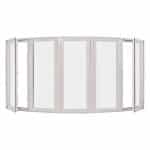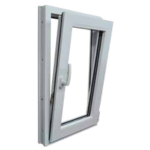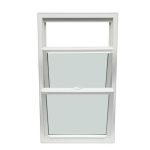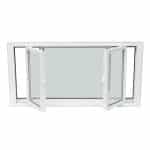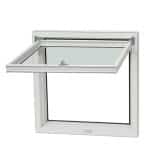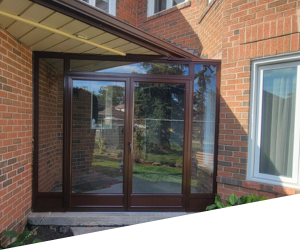 Here in the Greater Toronto Area, the weather is starting to warm up- which means it’s time to assess the damage from the winter and prep for the incoming summer heat.
Here in the Greater Toronto Area, the weather is starting to warm up- which means it’s time to assess the damage from the winter and prep for the incoming summer heat.
This year is extra special, as we’re all stuck at home in isolation, some of us with our families and no way escape from the growing project to-do list.
Maybe you need to clear a bit of the boredom or find an excuse to be outdoors when you can’t hit the trails or the parks. Given there’s a moratorium on big group BBQs for the time being, why not spend the outdoors doing all the things you’ve been putting off?
I’ve put together a top-to-bottom outline of what you should be looking for when inspecting your home for repairs and maintenance issues in the Spring. These are all things that you can inspect yourself. Or, if your DIY skills are limited to watching home renovation shows,– then you can hire a pro.
1. Check the Roof:
Get out your tall ladder and get up to the top! Your eyes are your best friend here. Most future roofing leaks and issues can be predicted by the state of the shingles and the seals around openings like chimneys and vents. Check for loose, cracked shingles or any that are broken or starting to raise around the edges. Check the flashing around your chimneys, vents and at roof vectors.
Hot tip: Broken shingles and raised flashing are desirable spots for urban wildlife like raccoons and squirrels, so don’t give them an in! Home prices are high enough without extra ‘tenants’ making our lives difficult.
2. Eyes on the Roof Line:
Start with inspecting your eavestrough and downspouts –and that means CLEAN THOSE GUTTERS, BABY! Yup, today’s gunky gutters are tomorrow’s summer storm-flooded basements to get all that dirt and sediment out before the torrential downpours.
Be sure to inspect for any dents and damage from ice freezing, as this can impede the flow of water and cause ice melt overflows down your siding and brick. While it looks super dramatic and pretty with glittery icicles, these can freeze and crack the mortar, which allows water behind the brick- AKA big, expensive trouble!
While you’re up there, don’t forget to check your soffits and fascia for water and ice damage, or any critters trying to take up residence. If you have wood fascia, this is a good time to touch up paint.
3. Inspect the Shell:
Siding: check for loose panels anywhere, or dents that affect the seal with the panel above. Check that the caulking along the seals and joints is flexible and not cracked.
Brick Homes: Check all mortar joints closely, especially in maintenance hotspots like around the chimney, rooflines and near downspouts. Fill any cracks or holes, and keep an eye out for sagging around windows and excessive moisture in the brick that doesn’t seem to dry out. These are indications of issues that should be inspected by a professional.
4. Sturdy up your Foundation:
Walk around the garden and inspect the base of your home. Check for pooling water, cracks or any areas of excessive moisture that doesn’t seem to dry out. Inspect your window wells for drainage and the casings around your basement windows.
5. Seal up Entry Points:
By far, the most bang-for-your-buck task for exterior maintenance is inspecting all your openings. It’s also something that you can do yourself seasonally and can save you a LOT of hardship and expense over the life of your investment. Obviously, we’re big fans of windows and doors over here so we’re a little biased, but we ALSO know that these are the hotspots and places where the outside gets in, and cause the majority of home maintenance expenses and issues related to the exterior. So, if you’re going to pick one task, then start here.
You want to invoke a little of Gandalf and a ‘you shall not pass’ attitude to ALL of our home openings. Also, inspecting your windows is also an inside/outside process as well. If you are seeing any moisture in the walls under the windows indoors then that’s a sure sign of a maintenance issue. But the whole point is that we can be preventative so that the damage doesn’t happen in the first place.
What to look for around your windows:
- Check the seals along with the outer frame of the window. Inspect the caulking for cracks and breaks. If the caulking looks dry or is starting to pull away from the frame, then it’s a sure sign that it needs to be replaced.
- Check the window frames and the mullions for signs of wear and tear. Any mould, mossiness, chipping paint or condensation inside a double-paned window are all signs that it might be time for some heavier maintenance or to consider a replacement.
What to look for around your doors:
- Check the seals underneath the threshold and make sure that there are no cracks or broken caulking underneath. Check the caulking around the outer frame for cracks and any edges pulling away. Inspect the seals around any glass cut inlays and mullions like you did with the windows.
- Test the doors for ease of opening/shutting. Houses can settle over time and doorframes sometimes need to be readjusted. Doors that are unlevel can put unnecessary strain on the hinges and hardware, and limit the life of your latches and locks.
Did your windows and doors not pass the inspection test? Or you are finally ready to take on that an environmental and design upgrade that you’ve been planning for? Support a local family-owned business, and order your high-quality windows and doors today, and we’ll help improve your home isolation. You’ll get to wistfully stare out of your beautiful windows until this is all over.
We are open and here to serve you and help you in any way we can.
Please feel free to contact us at (416-800-1365) for any questions you may have.
We are offering our customers 3 ways to obtain an estimate:-
1. Virtual Quoting system, using video conferencing – Click the link below to schedule your consultation
2. Email your sizes & pictures to [email protected]
3. We can come to your home measure up from the exterior. This can all be done without any social interaction
From our family to yours, stay well, stay healthy!
Related Article






